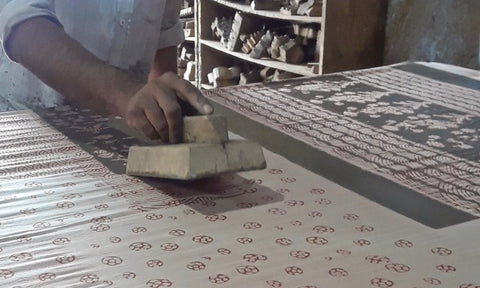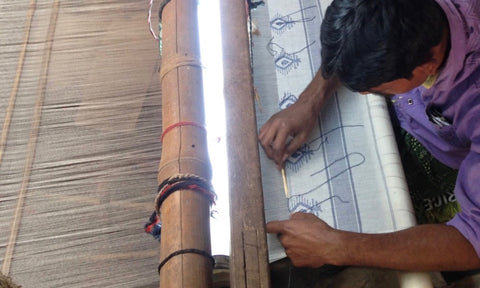About Loom & Stars Fabrics

Loom & Stars believes in beautiful fabric — fabric made by hand.
Many of our fabrics are actually made by people: skilled craftsmen and women using a variety of traditional techniques to create fabrics of incredible beauty. In India, artisans have been handing down their knowledge for generations; indeed, exquisite Indian fabrics have been exported to the West since the time of the Roman Empire, if not before.
Try sewing and wearing our fabric made by humans, not machines — we think you will love it! Hand woven cottons are so deliciously soft and light that you will want to wrap yourself up in them.
Because most of our fabrics are made by hand, every yard is slightly different. Your order will resemble what is shown in the photos but might not look exactly the same. There may be irregularities in the weave, dye, print, etc. due to the hand-crafted nature of these textiles. These are not flaws — we think that they add to the fabric’s charm and natural beauty! Each piece is unique and beautifully imperfect — just like people.
Loom & Stars fabric is by definition limited edition, being hand-crafted. We may have similar fabrics in the future, but they will never be quite the same — different weavers, different dyes, different creators and conditions.
Be sure to read about Working with Handloom Fabrics and Fabric Care.
See how our fabrics are made! Read about our visit to a weavers' village and learn how handloom fabrics are made.
Glossary:

Handloom fabrics: simply put, fabrics woven by a person using a hand loom, and not by a machine. These fabrics may be plain or have woven-in designs, or may be combined with other techniques described below. Amazingly, no electricity is used as an artisan creates a handloom fabric. (Okay, maybe to power their light bulbs!) Read more about handloom fabrics here.

Hand block printing: an artisan uses carved wooden blocks (and, often, natural dyes such as indigo) to the stamp a design onto fabric; again, without the use of electricity. Slight irregularities in the printing add to the charm of the fabric and remind us that it was made by human hands.
Hand-dyed fabric: as the name implies, fabric (sometimes handloom, but usually not) dyed by an artisan using a variety of traditional techniques, some of which are described below. Sometimes natural dyes like indigo are used, rather than synthetic/chemical dyes.
Hand-spun: yarn spun by hand, the making of which was revitalized by Gandhi as a symbol for India’s independence. This can be woven (usually also by hand) into fabrics in a range of weights. The resulting fabric is colloquially known as khadi, though that term is now trademarked by the Indian government. (Some fabrics are partly hand-spun - why? Using mill-spun cotton for the warp makes the cloth a little stronger and easier to weave.)
Indigo: some of our fabrics are dyed with real indigo: derived from plants, not petrochemicals. Indigo actually coats the fiber, so it will gradually lighten over time (think of the fading on old denim jeans). Wash separately when the fabric is new, as excess color may come off in the first few washes. Indigo is also light sensitive and should be stored with care.

Jamdani: to create this handloom fabric, additional wefts (cross grain threads) are added by hand while the fabric is on the loom, to create a design which is woven into the fabric. (Often mistakenly — but understandably — referred to as embroidery, which it somewhat resembles). Much of our jamdani fabric is made of hand-spun cotton yarn (see above); it is super-soft and lightweight, similar to batiste. Jamdani weaving has been declared by UNESCO to be an “Intangible Cultural Heritage of Humanity” — so let's help to preserve it! Read more about jamdani weaving here.
Shibori: a Japanese word which has become a useful catch-all term referring to various hand-created tie-dying techniques traditionally practiced around the world. An artisan causes parts of the fabric to resist the dye, for example by twisting or tying it, thus creating a design on the fabric where the dye could not penetrate. Some shibori techniques involve gathering the fabric with needle and thread; the needle holes will close up once the fabric is washed.